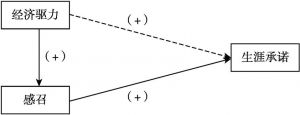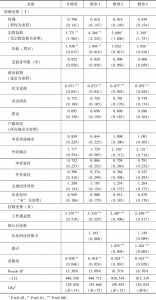论文
经济驱力还是感召:社会组织从业者生涯承诺研究
摘要
由于生涯承诺直接反映了社会组织从业者在社会组织领域的投入程度,因此,探讨社会组织从业者生涯承诺的影响因素是本研究的核心议题。在理路上,本研究选择交换理论和与社会组织领域亲社会意向和利他等内涵具有高度亲和性的感召(calling)作为指引,构建以经济驱力和感召为核心的研究假设。在方法上,本研究以江苏省五个城市抽取的941位社会组织从业者为研究对象,使用logistic回归模型对研究假设进行检验。本研究的研究结果是:(1)社会组织从业者所感知的感召对其生涯承诺产生显著正向影响;(2)社会组织从业者从业的经济驱力,通过感召对生涯承诺产生间接影响。最后,本研究建议,在应对社会组织从业者高度流失这一现象时,除了重视经济因素的作用外,还应关注从业者的价值追求。需要从制度和组织等不同层面创造有利于帮助从业者实现价值性追求的制度氛围、行业氛围,以及组织氛围。
作者
刘江 ,男,博士,南京理工大学公共事务学院社会学系讲师。
检索正文关键字
论文目录
- 一 研究背景
-
二 文献回顾及研究假设
- (一)社会组织从业者生涯承诺:概念与内涵
- (二)生涯承诺研究理路:交换和感召
- (三)分析框架及假设
-
三 数据、变量与样本
- (一)数据
- (二)变量
- 1.因变量
- 2.自变量
- 3.控制变量
- (三)样本基本特征
- 四 统计分析
- 五 结论与讨论
相关文献
查看更多>>>





